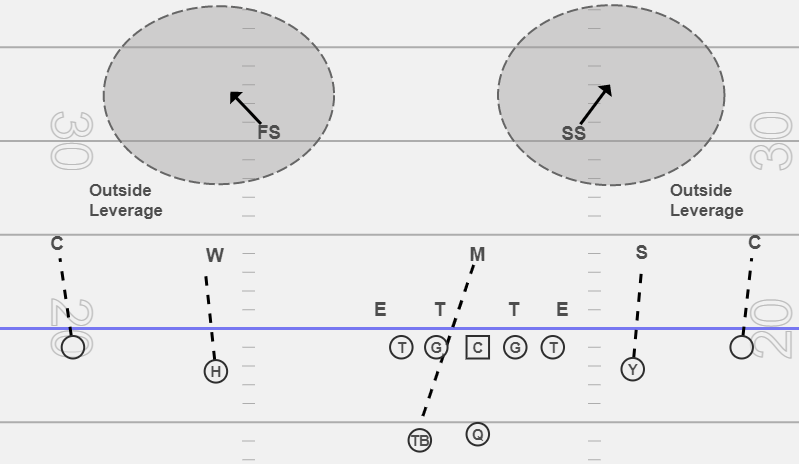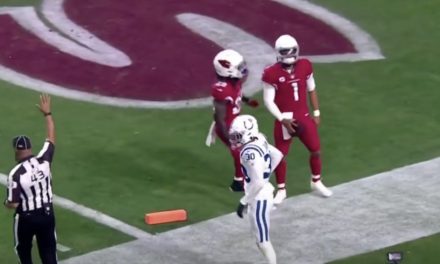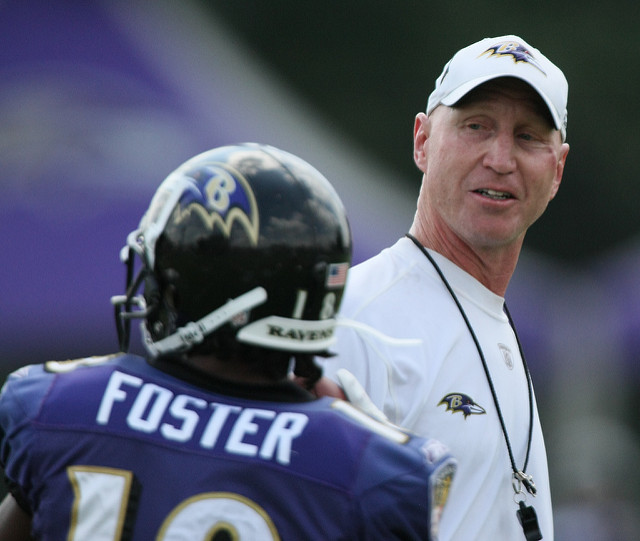Today we will discuss two less used 2-High coverages which have many different names in different systems, but I will refer to them as Cover 5 Defense and Cover 8 Defense
Welcome to Part 3 of our series of articles on defensive coverage recognition in an attempt to put both your mind and your quarterback’s mind at ease during the season.
Then when your Quarterback can see and recognize them as you can, he can help you get to the right concepts sooner and be like a second coach on the field.
Earlier in this series, we dove into the basic 2-High coverages which are Cover 2 & Cover 4. Before that, we wrote about Cover 0 and Cover 1 and 3 you can find here.
EXPLAINING COVER 5 DEFENSE
Cover 5 is difficult for defenses to use a high percentage of the time because it creates a numbers disadvantage in the box.
That being said, it creates major problems when devising concepts to use against it on critical passing downs.
In Cover 5 Defense (Figure 1), the underneath defenders play man coverage, while the safeties play similarly to their basic Cover 2 rules.
This helps the defense by taking away underneath throws with aggressive coverage while protecting those same aggressive defenders from getting beat by the deep ball.
The probability of completing a long yardage pass versus this scheme is quite low.
HOW TO DIFFERENTIATE BETWEEN COVER 2 & COVER 5
Cover 5 is my least favorite coverage to see on passing downs, due to the difficulty it creates to get receivers open.
Even if you are a team that can get great separation versus man coverage, the safeties playing over the top creates havoc in trying to complete a pass that would normally be open in other man coverages.
But, how can you tell if a team is getting ready to play Cover 2 or Cover 5?
The main tell is the eyes of the non-safety defenders.
You will get no determination from the safety versus Cover 5 teams, so do not be very concerned with them.
Keep your eyes on the corners.
The difference between Cover 2 and Cover 5 are the eyes and body language of the corners.
In Cover 2, the corners have outside leverage, with their body and eyes turned toward the quarterback.
In Cover 5, the defenders are playing man, so they must have their eyes on the receivers.
Another possibility is the width of the linebackers.
If a team’s base alignment keeps at least two of their linebackers in the box, a 2-High pre-snap shell with linebackers outside of the box is a pretty good sign that you are going to get Cover 5.
The more spread out you are, the easier it is to determine the difference.
One important point that makes it difficult to determine the difference between Cover 2 & Cover 5 in the pre-snap, is sometimes Cover 5 teams will play man coverage with their corners having head-up or outside leverage.
They know their help is deep and to the inside, so if their corners are good enough, they can play underneath your routes, knowing they have help over the top.
This makes it look like corners are playing Cover 2, but are not. Again…teams that play Cover 5 make it difficult to throw the ball in passing situations.
The best way to play offense versus Cover 5 is to either throw quick routes that have a catch-&-run aspect to them or to run the ball.
If a receiver can release inside of a defender, or get a rub or screen pass thrown on the perimeter, you may be able to get enough yards after catch to get the first down.
When running the ball, if you are aligned in a detached 2×2 or 3×1 set, you should only have to block five box defenders.
And, the Mike will most likely not read his keys as well because of his man-coverage responsibility on the tailback.
This gives you seven offensive players in the box versus five defenders, which gives you a great numbers advantage, maybe even good enough to decide to run the ball on 3rd and long.
And, if you have a quarterback that can run, you may be able to get the Mike out of the box with an empty formation or with tailback motion (I would suggest tailback motion if you have it available because most teams have empty checks that will get them out of this coverage in the pre-snap) and have no linebackers to stop the run.
But again, having the guts to do this is tough.
And having the nerve to throw a quick-game route on 3rd and 11 is just as gutsy.
But play the percentages.
Throwing a 15-yard route against Cover 5 defense is a very difficult thing to do in the high school game!
EXPLAINING COVER 8 DEFENSE
Cover 8 defense, otherwise known as Invert or Cover 2 Invert is a coverage we have begun to see more and more when we are in 12 or 22 personnel looks (Figure 2).
Cover 8 defense allows defenses with a run-heavy game plan to play Cover 2, while also giving themselves the ability on early downs to get nine defenders into the box.
One creative way defenses will do this is, on the snap of the ball, run their safeties down into the box with three different responsibilities based upon what they see in the pre-snap.
If they get run-action from the box end man on the line of scrimmage, they will continue on their path expecting a spilled running back to run into them, because they are most likely not being blocked.
If the safety gets a vertical threat from a #2 receiver, he will stop and run with that receiver.
This would turn Cover 8 defense into either a Cover 4, or maybe even a Cover 0 look, depending upon how the defensive coordinator teaches them to cover.
If the safety identifies a flat threat, the coverage will become a true Cover 2, as he will follow that route to the flat.
On all Cover 8 defense styles, the corners have deep half responsibilities like the safeties normally do in Cover 2.
A great way to beat teams that run Cover 8, is on an early down, run a play-action concept that has the #2 receiver, optimally a tight end so they stay with the coverage, run an out & up or Nod route.
If the tight end releases to the flat, the safety will stay on a downhill path.
With patience, he can stop his out/arrow route and get vertical.
If the outside receiver runs a vertical route, the corner has to decide which receiver he will cover due to the spacing it creates.
Read that corner and throw to the receiver that is open.
Also, you can tighten your receivers and block the safeties with your outside guys.
The corners will most likely not come all the way in, and are usually the worst tacklers on any defense.
Force the players responsible for the pass to make plays in the run game.
If you go this route also come up with at least one pass concept, especially with play-action, in an attempt to get an explosive play.
HOW TO DIFFERENTIATE BETWEEN COVER 2 & COVER 8 DEFENSE
This is probably the easiest coverage to determine in the post-snap, because if you are playing a 2-High team, or even a multiple team, there is no other coverage I have seen that sprints both safeties downhill on the snap of the ball.
And again, if you are a run-heavy team or a team that runs a lot of 12 or 22 personnel formations, you have to begin to prepare to play against this in the summer so your quarterback will be ready for it.
CONCLUSION
I recently heard an interview with Nick Saban in which he referred to offensive coaches as “The Taliban” because they keep him up at night with all of their creativity, tempo, and big-play ability.
But if you are a team that does not have a dynamic offense, defenses create nightmares, because they can line up in a 2-High base alignment and do many things to you without giving you a single hint as to what is coming once the ball is snapped.
If this is something you are beginning to see but do not feel comfortable with your plan, run more unbalanced or 3×1 sets.
It is easier to run picks or force teams to align in different coverage if you are not in a balanced or tight formation.
Get them out of it, because both of these coverages are an absolute bear to run what you want to run due to the fact that they can take away what you want to do on that down & distance.




